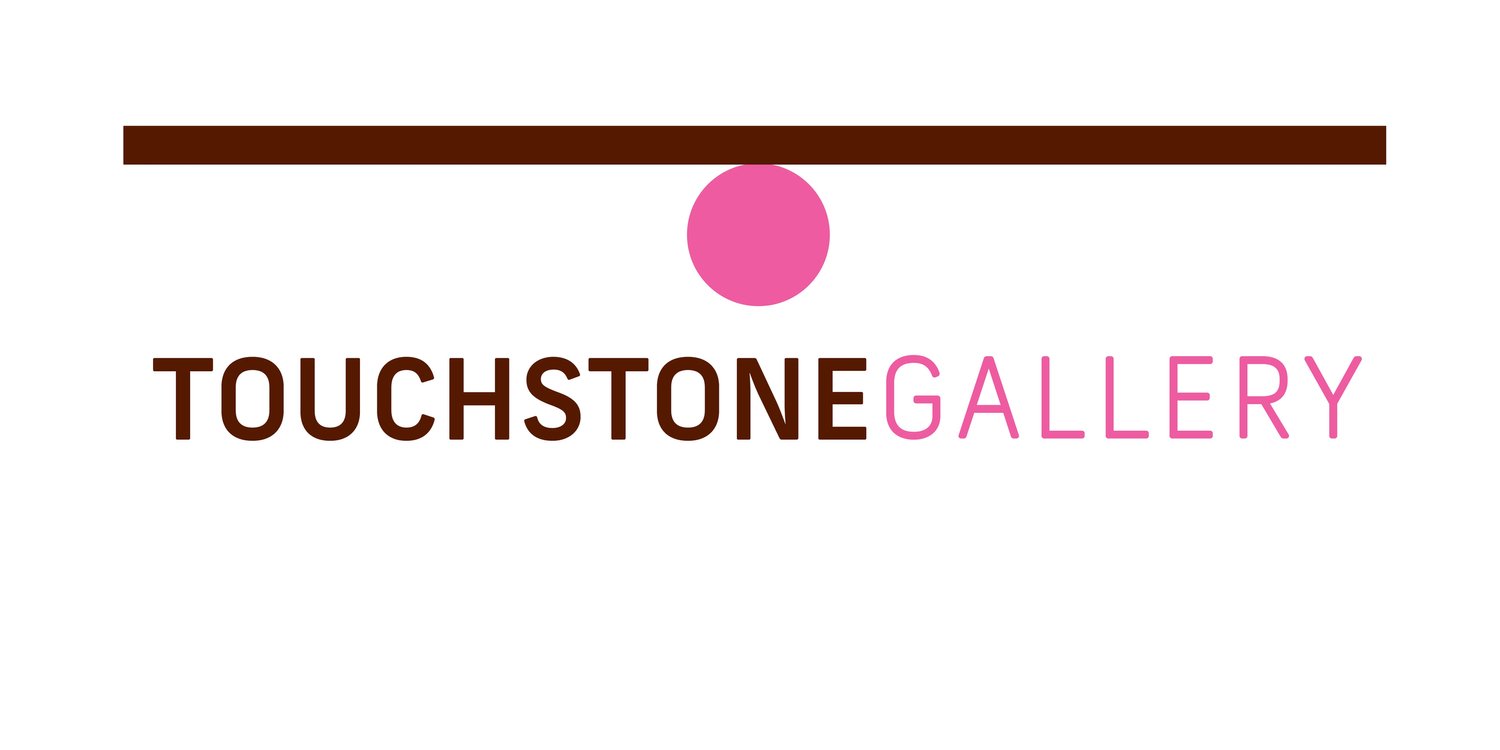Touchstone intern and GW Art History Grad Student Thea Polsky interviewed Anne Stine about her piece in the 2024 Iteration Reiteration juried exhibition.
Love is Heavy and Light, a title from Shakespeare’s Romeo and Juliet, captures the duality and complexity of love. The heavy rock formation imagery of the composition symbolizes the weight and intensity of affection, while the light colors and ethereal quality represent the work’s uplifting and delicate aspects. These rock formations build off each other, creating a kind of community where each member lovingly supports one another.
The use of encaustic painting captures the vibrant colors, fluidity, and textures of nature like no other medium. Using handmade beeswax paint, multiple translucent layers are created and invite viewers to explore the hidden depths of the surface. This encaustic process of layering and fusing with a blowtorch over and over embodies the show’s theme of repetition and refinement.
It’s the unpredictable nature of the piece’s medium that is truly inspiring and in its finished state has an overall balance of form, shapes, value, edge, and color.
——————
Thea Polsky: What led you to choose encaustic as the primary medium for your work?
Anne Stine: Encaustic painting lets me capture the vibrant colors, fluidity, and textures of nature like no other medium. In my abstract landscapes, I love to showcase vivid colors, dramatic textures, and a luminous quality. Using my handmade beeswax paint, I create multiple translucent layers that invite viewers to explore the hidden depths of the surface. The sculptural quality of the wax allows me to build textures that bring my work to life in a tactile way.
With a blowtorch in hand, I fused each layer onto a wood panel. I then gouge, scrape, and drip the wax to form impressionistic and abstract images of landscapes, waterways, and other natural scenes. It’s the unpredictable nature of the encaustic process that truly inspires me to push the boundaries of the medium and my imagination.
TP: How does the title relate to the artwork?
AS: I chose the title, Love is Heavy and Light, from Shakespeare’s Romeo and Juliet because it captures the duality and complexity of love. The heavy rock formation imagery in the composition symbolize the weight and intensity of love, while the light colors and ethereal quality represent its uplifting and delicate aspects. This juxtaposition within the painting reflects the idea that love can be both a burden and a source of joy, much like the verse suggests. I also see rock formations as representing a “community” of individuals where each member lovingly supports one another.
TP: Tell me more about the abstract elements of your artwork.
AS: It’s much like a dance when I create an abstract landscape. I first start with a base painting where the composition is loosely etched in with mixed media mark making to capture the overall flow and connection of forms in the painting. Here, I allow myself the freedom to express whatever comes to mind knowing there will be an opportunity to edit the base at a later stage.
Next, I apply clear encaustic medium to protect the base and decide on the palette that I’ll choose depending on the message of the artwork. In this painting, I chose a soft cool palette of greys and blues with subtle warm notes of creams and browns to reflect the soft feeling of being in love.
I continue adding encaustic paint to create the larger forms progressing each step to smaller and smaller shapes as a way of adding interest and detail. Lastly, I go back and add expressive marks or scrape a variety of lines for a feeling of movement and whimsy. I feel that the painting is finished when there is a balance to form, shapes, value, edge, and color.
TP: How does Love is Heavy and Light exemplify the theme of Iteration Reiteration?
AS: The artistic process itself of creating multiple translucent layers of beeswax paint is a direct form of iteration. Each layer builds upon the previous one, adding depth and complexity to the artwork. This process of layering and fusing with a blowtorch over and over embodies the theme of repetition and refinement. The repeated use of rectangular and square shapes in the artwork mirrors the natural patterns found in rock formations.

